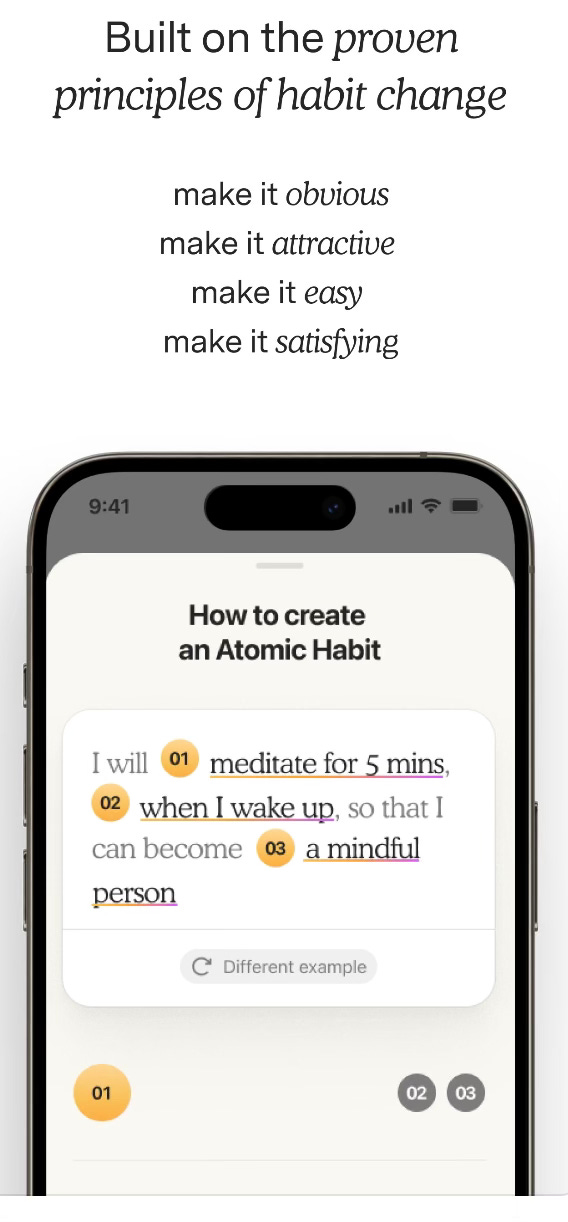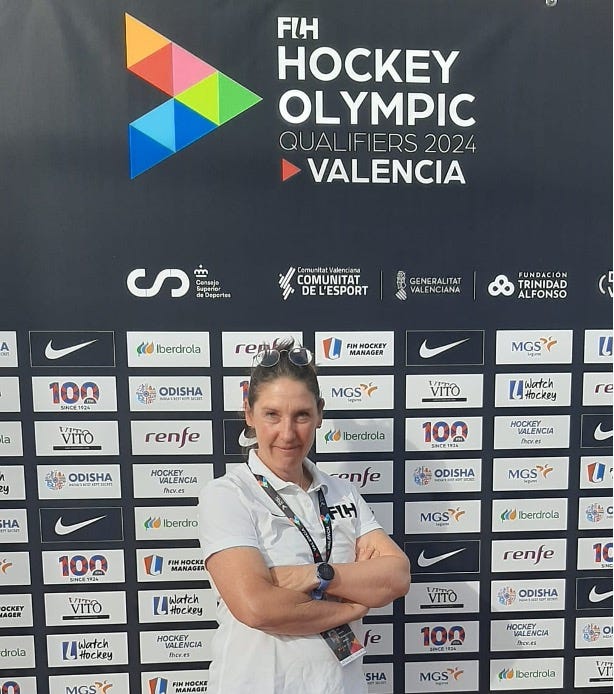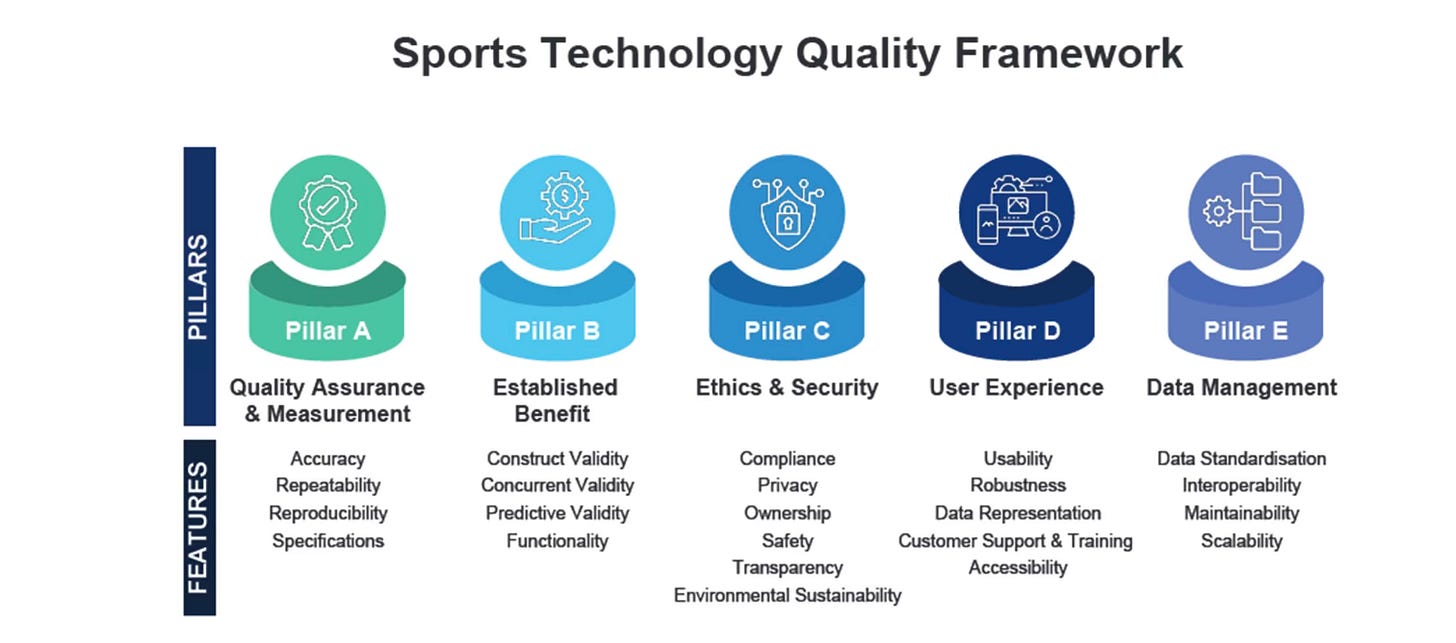WELCOME😊
The Athletic Performance Insider newsletter is published weekly and presents up-to-date research, exclusive interviews, practical tips, and the latest industry news and trends.
Dr Leigh Gordon is interviewed in this edition. She talks about the seven years she worked as the Blitzboks’ team physician and how she transitioned to working as a Sport and Exercise Physician in a clinic while also being a consultant for the International Hockey Federation and World Rugby. She addresses the challenges of finding a balance between family and work. Make sure to watch the video embedded in the interview. It will tug at your heartstrings.

If you want the newsletter delivered to your mailbox every Tuesday, press the subscribe button.
RESEARCH🧐
How do world-class cyclists periodise their training?
Gallo, G., Mateo-March, M., Fuk, A., Faelli, E., Ruggeri, P., Codella, R. & Filipas, L. The Day-by-Day Periodization Strategies of a Giro d’Italia Podium Finisher. Int. J. Sports Physiol. Perform. 1–5 (2024)
This is a study of a world-class cyclist's training and racing strategies leading up to a podium finish at the Giro d’Italia. The research focused on analysing 152 days of power meter data to understand the athlete's preparation. The study involved a detailed examination of daily training loads, volumes, and intensity distribution.
Key findings revealed a strategic pattern of alternating "hard days" with "easy days," ensuring that medium or high intensity was not sustained for more than two consecutive days. This approach was complemented by high-volume sessions that included significant amounts of medium and high intensity. The study concluded that such periodisation strategies were instrumental in achieving top performance in the Giro d’Italia.
Practically, these insights offer valuable guidance for coaches and athletes in cycling and other endurance sports. Adopting similar periodisation strategies can potentially enhance training outcomes and competitive performance.
Does cold water immersion after resistance training affect muscle hypertrophy?
Piñero, A., Burke, R., Augustin, F., Mohan, A. E., DeJesus, K., Sapuppo, M., Weisenthal, M., Coleman, M., Androulakis‐Korakakis, P., Grgic, J., Swinton, P. A. & Schoenfeld, B. J. Throwing cold water on muscle growth: A systematic review with meta‐analysis of the effects of postexercise cold water immersion on resistance training‐induced hypertrophy. Eur. J. Sport Sci. 24, 177–189 (2024).
This study was a systematic review with meta‐analysis of the effects of postexercise cold water immersion on resistance training‐induced hypertrophy. The study evaluated the impact of cold water immersion (CWI) and resistance training (RT) on muscle growth. The researchers systematically reviewed the literature and performed a meta-analysis of data from eight studies that met their inclusion criteria, focusing on CWI as the cold application method.
The analysis revealed that resistance training alone will likely result in at least small hypertrophic adaptations. In contrast, CWI and RT combined showed only small to negligible effects on muscle growth. The study found evidence suggesting that CWI might reduce the hypertrophic changes induced by resistance training.
The conclusion drawn from this research is that applying CWI immediately after resistance training sessions may hinder muscle growth. However, the authors advise caution in interpreting these results due to the fair to poor quality of the examined studies.
For athletes and individuals aiming to maximise muscle growth through resistance training, it may be beneficial to reconsider using cold water immersion as a recovery strategy immediately following workout sessions.
My goal is muscle hypertrophy. Is it better to train to fatigue or have petrol in the tank after each set of resistance training exercises?
Refalo, M. C., Helms, E. R., Robinson, Z. P., Hamilton, D. L. & Fyfe, J. J. Similar muscle hypertrophy following eight weeks of resistance training to momentary muscular failure or with repetitions-in-reserve in resistance-trained individuals. J. Sports Sci. ahead-of-print, 1–17 (2024).
This study investigates whether resistance training protocols— (i) training to momentary muscular failure versus (ii) training with repetitions-in-reserve affect muscle hypertrophy differently in resistance-trained individuals. The participants underwent an 8-week unilateral resistance training intervention, where each lower limb was randomised to perform exercises either to momentary muscular failure (FAIL) or with a perceived 1-2-repetitions-in-reserve (RIR). Before the intervention, baseline muscle thickness measurements were obtained, and participants were familiarised with predicting intra-set RIR and reaching momentary muscular failure.
Key findings indicate that both training protocols resulted in similar muscle hypertrophy over the eight weeks, with an impressive mean participant adherence rate of 98%. This suggests that individual preferences and characteristics can guide the choice between training to failure or employing RIR without compromising muscle growth outcomes.
Practically, this research supports flexibility in resistance training prescription, allowing for individualised approaches based on factors like fatigability and session structure. It highlights the importance of considering various resistance training variables and individual characteristics to maximise the resistance training stimulus for muscle growth across a session.
TRIVIA🫣
Fun facts from the Paris Olympics 1924
Harold Abrahams and Eric Liddell won the 100 and 400 meters in the 1924 Olympics. Their achievements were immortalised in the Oscar-winning film Chariots of Fire.
American swimmer Johnny Weissmuller, who won two Olympic gold medals, gained fame in Hollywood as the original Tarzan.
The Finnish runner Paavo Nurmi was the biggest star of the Olympics, having won five gold medals in addition to the three he had previously won in Antwerp four years earlier. Among his impressive victories were the 1500m and 5000m races, which he won within just an hour.
PRACTICAL 🤔
James Clear's book "Atomic Habits" delves into the power of making small changes and developing habits to achieve remarkable results.
The book offers practical strategies to establish good habits, break bad ones, and transform behaviour for long-term success. It emphasises the significance of taking small actions, their compound effects, and self-identity's role in creating lasting habits. Much of the content can be applied to improving athletic performance since the underlying theme is the compounding impact of consistent, incremental improvements in training routines, nutrition, and mindset.
An app, Atoms, has been released to complement the book and support the process of changing habits.
INTERVIEWS AND PROFILES🤝
Up close and personal - Dr Leigh Gordon
Name and qualifications
Dr Leigh Gordon
MBChB (UCT); Dip Obs (SA); DCH (London); DFFP (London); MRCGP (London); MPhil. SEM (UCT)
Background and Introduction
I grew up as a competitive swimmer. That was tricky to continue as a medical student, so I continued sport as a hockey player – never brilliant – just fun to do a team sport after the very individualised swimming experience. I continued to play throughout university, and hockey was one way to meet new people when we moved to Cambridge (UK). It was there that I got involved with elite sport – I was fortunate to be awarded a senior ‘GP registrar’ post in special skills of Sport and Exercise medicine. It allowed for a step into the door of the Addenbrookes SEM Clinic and, more excitingly, the Cambridge Rowing crew, who were working towards their ultimate goal of winning the Boat Race. Incidentally, the year I was there was one of two years where a dead heat was declared.
Motivation and Passion
I was inspired to work with athletes because I enjoy working with patients i.e. athletes, who are highly motivated to exercise! I love working in team environments and still love the thrill of being involved in high-level competitions.
Standing on the field of Cape Town Stadium singing our national anthem with the Springbok Sevens rugby team before the final of Cape Town Sevens with 55000 people around us singing solidified my passion for working with athletes. It was my first major team event, and it got me hooked!
Career Journey
In retrospect, it was a bit of a roundabout journey, but all the experience along the way has contributed to my skill set. I recently discovered my Matric yearbook, where I saw myself as a sports doctor in the future – in fact, it was almost 15 years after qualifying that I ended up in sports medicine full-time.
As mentioned, my introduction into sports medicine was during my time in Cambridge. Having done the Special Skills component in Sports Medicine, I focussed on musculoskeletal medicine and women’s health in the practice. I also had the opportunity to work in the main Sports Injury Clinic at Addenbrookes Hospital, the main teaching hospital in Cambridge, and the Musculoskeletal GPwSI Clinic (GPs with Special Interests clinic). Our children were born in Cambridge, and after that, there was no time to do the London Sports Med course!!!
We returned to South Africa in 2011 and I joined the University of Cape Town Sports and Exercise Medicine MPhil programme. During this time I volunteered at Cape Town hockey matches / tournament for practical experience. I also started working as a club doctor for Villagers Rugby Club where they were aiming to be promoted back into the Super League A. I finished my MPhil in 2014. My pivotal year was in 2015 for 3 reasons; 1) I was appointed as team physician to the Men’s and Women’s national 7s rugby sides – in addition to providing a massive opportunity for experience in working with top-level athletes, it also opened the doors to many World Rugby opportunities. 2) From a hockey perspective, I was invited onto the international panel of doctors for the FIH (International Hockey Federation), which entails being the Chief Medical Officer for major tournaments such as the World Series/World Cup/Summer Olympic Games. 3) I was also one of the three founding partners for Cape Sports Medicine – a sports medicine practice at the Sports Science Institute of South Africa – this is now one of the largest sports medicine practices on the African continent.
I currently wear many hats: mom/wife; Sport and Exercise Medicine physician in private practice; World Rugby Medical Trainer (for pitch-side care courses for medics); World Rugby Independent Concussion consultant and Head Injury Assessment doctor on match days; FIH Medical Officer – currently appointed to Paris Summer Olympics; University of Cape Town honorary lecturer.
Challenges and Learning
Working in an all-male environment in rugby was one of the most significant challenges I've faced in my career. It took a while to establish trust with the management team and players, but I always focused on making the best decision for the players’ welfare.
Time management is also a challenge – the solution is LISTS – clarifying what is Important vs Urgent, vs both.
Memorable Experiences
One of my Sevens players was unfortunately diagnosed with a type of cancer – this was my first experience with working closely with an athlete with such a life-altering diagnosis. It was a very emotional path to travel but it had a good outcome. In one of his interviews, I realised that our words can make a difference – I had forgotten that I’d told him to see the timeline of his journey like return to play after an ACL repair – there is an expected (LONG) timeline and potential complications along the way – for him it had helped to have a discrete timeline in his head. The interview with the player is available at this link.
Daily Routine and Work Ethic
I’m currently not working with a team, so my day is structured around my private clinic calendar. During tournaments, one knows you are available 24/7 to athletes/management, and you need to be prepared for that!
I’ve realised the importance of regular breaks with family, and regular exercise, without which I get very grumpy! I try to set ‘goals’ each year as part of my personal development plan and need to sit down with calendars on a regular basis to see how to fit everything in!
Relationships with Athletes
This takes time. I usually try to find some experience/person we have in common initially. Hopefully after a while, my athletes know that I always have their best interests at heart, and this makes them comfortable to discuss all sorts of issues with me.
I had several meaningful connections when working with the 7s rugby team – I still stay in regular contact with a few of them in their ‘post-rugby’ life.
Adaptation and Innovation
I try to stay up to date with the latest trends and advancements in athletic performance by keeping an eye on journals, and attending local conferences/congresses.
Personal Connection to Sports
I guess the fact that I played hockey and understand the rules as a player, makes it easier for me to interact with the players and officials in the FIH tournaments.
Advice for Aspiring Professionals
Many people don’t know what they want to do. Do something you enjoy, and that will open up doors into the environment you want to be in.
Another lesson I have learned is to always trust your gut feelings. On the occasions I have ignored it and tried another option, it has always come back to bite me.
Balancing Work and Personal Life
It is difficult to balance your professional commitments and personal life. I made a very difficult decision to resign as 7s team physician at the end of 2021, after 7 years of being in the post. Teamwork requires adhering to the team’s schedule, and this is often in conflict with being able to plan family holidays/events. My daughter had 2 years left of school at the time; I wanted to have the flexibility of spending more time with her and my son and husband.
Future Goals and Aspirations
Currently, I’m more in the space of mentoring/teaching younger professionals, which I enjoy. My passion is concussion management – I’ve been part of setting up a state-based Concussion Clinic at the UCT/Groote Schuur NeuroScience Institute, and I’d like to grow that. Unfortunately, like all state-based facilities, it is very limited by resources.
Favourite Quotes or Mantras
Nelson Mandela’s quote: “It always seems impossible, until it’s done”.
INDUSTRY NEWS📡
Is there a standardised, evidence-based framework to assess the quality of sports technology?
Robertson, S., Zendler, J., Mey, K. D., Haycraft, J., Ash, G. I., Brockett, C., Seshadri, D., Woods, C., Kober, L., Aughey, R. & Rogowski, J. Development of a sports technology quality framework. J. Sports Sci. ahead-of-print, 1–11 (2024).
This study aimed to develop a comprehensive sports technology quality framework. The research was conducted through a two-round survey involving 48 participants from various geographical regions and professional backgrounds, including sports technology companies, research, academia, and professional sporting teams. The survey achieved consensus on all pillars of the framework, with specific attention to Quality Assurance & Measurement and User Experience, which both reached 100% consensus.
Minor changes were recommended after each round, leading to developing a white paper to facilitate interest and uptake among sports technology end users.
The practical applications of this study are significant for the sports technology industry. By establishing a clear and consensus-driven framework, technology developers and users can ensure the quality, reliability, and ethical use of sports technologies.
This framework also aids in standardising sports technology development and evaluation, promoting a more unified approach to technology implementation in sports settings.
-oOo- -oOo- -oOo- -oOo- -oOo- -oOo- -oOo- -oOo- -oOo- -oOo- -oOo- -oOo-
Please subscribe to ensure you receive a weekly newsletter delivered to your inbox. If you find the newsletter useful, share it with your colleagues. The next newsletter will be published on the 5th March 2024.









